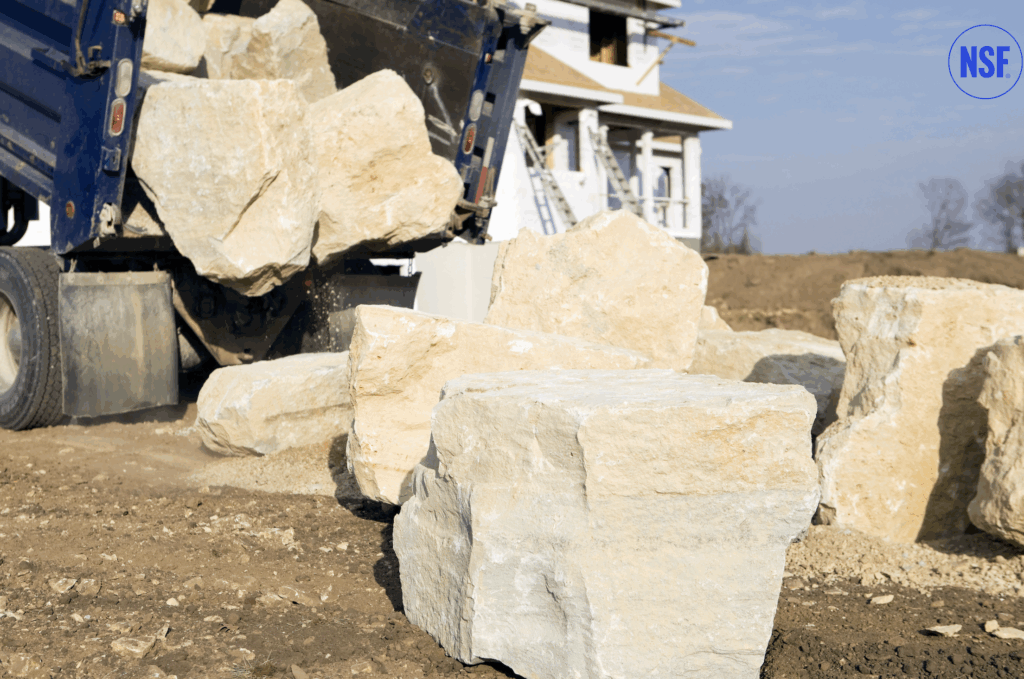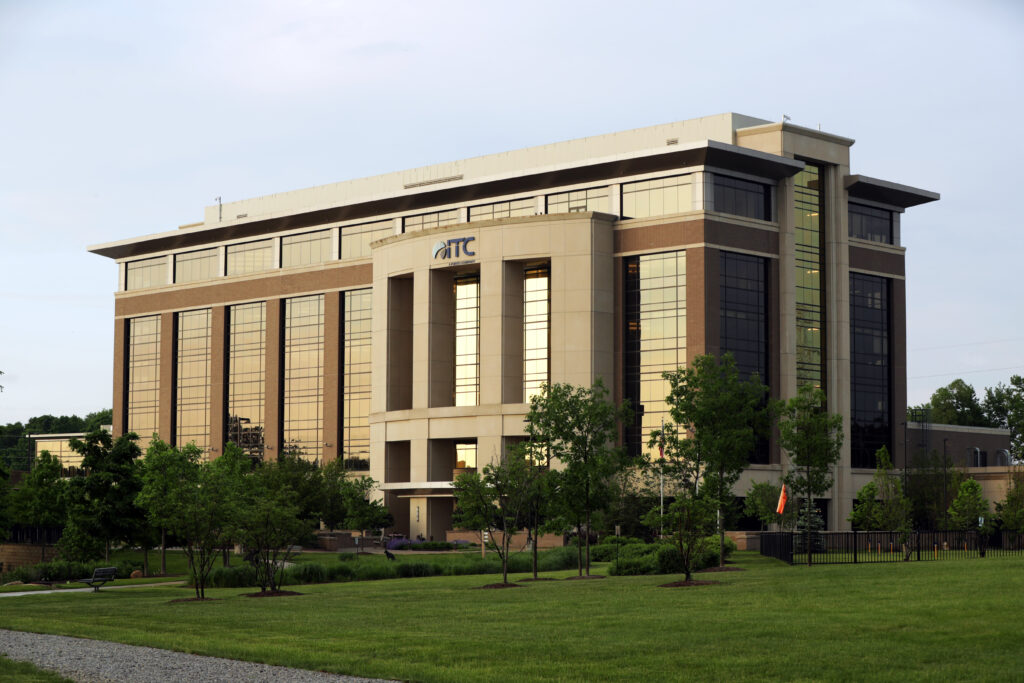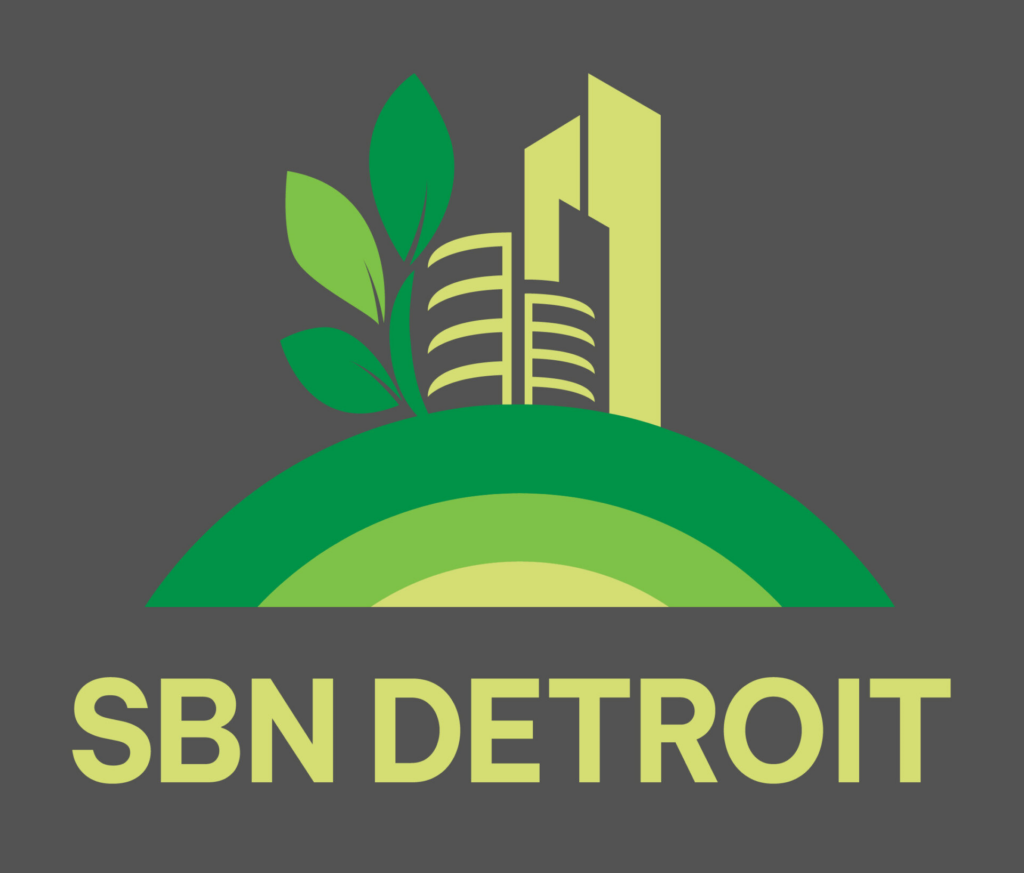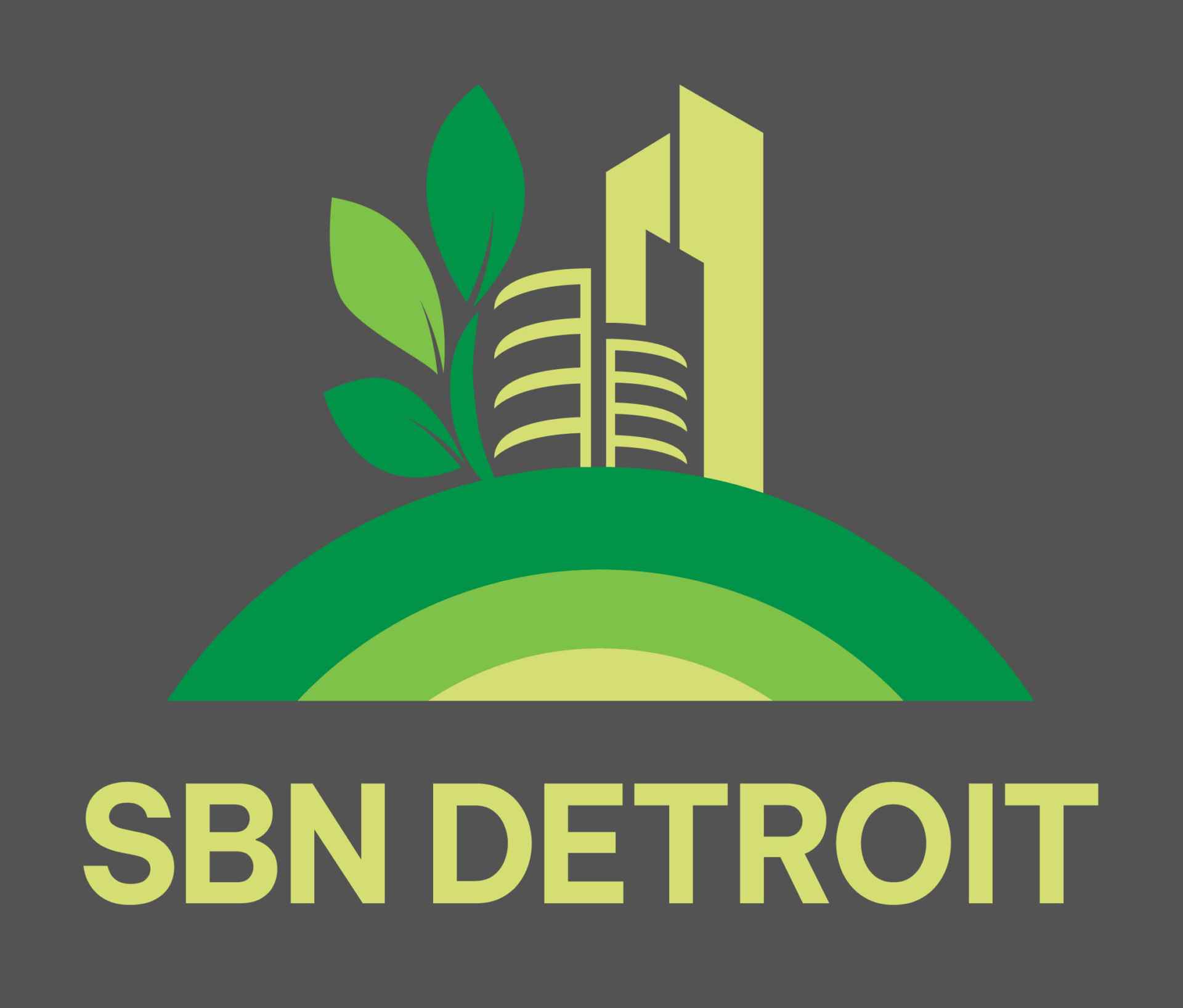Advancing Sustainability

Ann Arbor-based NSF is a 501(c)(3) nonprofit that develops public health standards and provides auditing, certification, and training across industries ranging from food and water to consumer products and manufacturing. Its work often intersects with sustainability, helping businesses measure environmental performance and verify progress toward their goals. SBN Detroit interviewed Justin Brown, senior manager of sustainability & product verification at NSF, about the challenges companies face in advancing sustainability, the opportunities emerging in Southeast Michigan, and the role of credible verification in driving meaningful progress. Q: NSF is well known for setting public health standards globally. How do you translate that expertise into helping businesses meet sustainability and environmental goals? A: NSF has applied independent, science-based rigor for decades — starting in water and food safety more than 80 years ago — and we’re bringing that same approach to sustainability. Over the past year, we’ve renewed and expanded our standards, developing lifecycle-based sustainability criteria across water, textiles, and building materials. Beyond standards, we provide auditing, certification, and training to help organizations measure ESG performance and translate sustainability goals into credible, verifiable outcomes. Q: From your perspective, what are the biggest sustainability challenges companies in Southeast Michigan are facing today? A: It comes down to businesses balancing the competitive landscape with rising expectations from regulators, investors, and consumers. In this region, with its deep roots in mobility and manufacturing, the challenges include managing environmental impacts across complex supply chains, ensuring accurate reporting, and adapting to shifting regulatory requirements. Companies also face pressure around chemical safety, waste reduction, and responsible sourcing. At the same time, Southeast Michigan’s legacy in manufacturing creates opportunities to innovate and lead in sustainable practices. NSF helps organizations address these challenges with tools like ESG verification services and product transparency standards that provide measurable criteria to help them progress forward. Q: Many businesses struggle to balance cost and sustainability. What approaches or frameworks do you advise that help companies align financial performance with environmental responsibility? A: Sustainability and affordability can work hand in hand. The more resources a company saves through efficiency measures, the more profitable it can become. Recycling, composting, and other circular practices can create new revenue streams, while energy-efficiency certifications and improvements reduce both environmental impact and cost. These steps don’t just save money — they differentiate companies in competitive markets. Increasingly, investors also reward businesses that integrate sustainability into their core operations, because it signals long-term resilience and accountability. When sustainability is embedded across daily decisions, it strengthens financial performance, builds trust, and reinforces that environmental impact is a true priority. Q: NSF works across industries — food, water, consumer products, and beyond. Where do you see the greatest opportunities right now for businesses to make measurable sustainability gains? A: The strongest opportunities are where transparency and accountability meet. Consumers are demanding to know more about what they’re buying, and companies that can demonstrate credibility through certifications or reporting stand out. In food and retail, certifications like organic or EPA Safer Choice are increasingly important. In manufacturing, standards such as NSF 375 for water-contact products help demonstrate leadership to both regulators and customers. We’re also seeing momentum in chemical safety, carbon accounting, and lifecycle reporting. In Michigan specifically, water stewardship and manufacturing innovation represent major opportunities for businesses to lead. Across industries, credible reporting and product declarations allow companies to show stakeholders that their commitments are real and measurable. Q: How do you see the conversation around sustainability shifting from “compliance” to “innovation”? A: Compliance is no longer the end goal — it’s the baseline. Businesses are increasingly using sustainability as a launchpad for innovation, whether that’s redesigning products to minimize environmental impact, reducing hazardous materials, or creating circular pathways that keep materials out of landfills. A good example is our collaboration with the Global Electronics Council to launch a sustainable electronics standard. Standards like this don’t just respond to regulation — they actively drive innovation and competitiveness. For companies, this shift means sustainability isn’t just about avoiding risk; it’s about uncovering entirely new opportunities. Q: Can you share examples of how businesses are leveraging sustainability as a driver of new opportunities? A: Sustainability is a market differentiator, particularly in industries like automotive. Globally, consumers are paying closer attention to the environmental impact of the products they purchase. Verification and reporting give companies a way to validate their performance, communicate their values, and build loyalty. When businesses can prove their claims with credible third-party data, consumers reward them with trust, and that drives growth. Q: In your work with companies of all sizes, what distinguishes those that succeed in embedding sustainability deeply into their operations from those that struggle? A: It starts with leadership buy-in. When sustainability is treated as a real priority from the top down, it creates employee engagement and accountability throughout the organization. Successful companies also consistently measure performance and use credible tools like ESG reporting, lifecycle assessments, and social audits. Those that struggle often lack reliable data or the ability to collect it, which makes progress difficult. Embedding sustainability into daily decisions, backed by accountability, is what creates lasting impact. Q: What advice would you give to Southeast Michigan companies that want to prepare for future sustainability expectations from regulators, customers, and investors? A: Start by developing a deep understanding of your current practices, products, and services, and identify where the gaps are relative to both current regulations and emerging expectations. Then, build in measurable tools to track and verify progress. Regulators, customers, and investors are all looking for credible third-party validation, and leveraging auditing, reporting, and certification can help companies build resilience and strengthen their position in Michigan’s evolving sustainable economy. Companies that take these steps today will be better prepared to compete — and thrive — tomorrow. Be sure to subscribe to our newsletter for regular updates on sustainable business practices in and around Detroit.
ITC Holdings and Its Role in a Greener Grid

Founded in 2003 and headquartered in Novi, Mich., ITC Holdings builds, operates, and maintains high-voltage electric transmission systems that carry electricity in Michigan and around the Midwest. The company owns and operates approximately 16,000 circuit miles of transmission lines across 90,000 square miles of service territory. SBN Detroit interviewed Simon Whitelocke, senior vice president and chief business officer to find out more. Q: How does ITC approach sustainability? A: We are central to a broader sustainability initiative aimed at decarbonizing the electrical grid, facilitating the shift by interconnecting greener electricity, even though we don’t generate it ourselves. When building transmission infrastructure, we are highly mindful of our environmental impact. Our transmission lines, which have a lifespan of sixty to seventy years, traverse both urban and rural areas. We strive to be good neighbors to the environment, habitats, and wildlife around them. Before starting a transmission project, we conduct an environmental assessment to determine the best route, the type of land it will occupy, and potential impacts on sensitive habitats or endangered species. We also carefully plan the construction timing to minimize its environmental impact. Q: How has ITC evolved over time when it comes to sustainability? A: From day one, ITC has prioritized being mindful of our impact, making environmental responsibility a core part of our company culture. As we’ve expanded into diverse geographies and worked in various environments, our commitment has deepened. Our repertoire and tools have grown and adapted over time, leading to enhanced and improved expertise. Q: How has the infrastructure evolved, and what are the solutions for building toward sustainability? A: We operate with significant oversight, often collaborating with federal, state, and local governments, which provide a framework of standards. Cities and states have developed sustainability plans that we work within. For example, Michigan has the MI Healthy Climate Plan, and we align our efforts with it. The public is also more aware and engaged, and there is much greater support for sustainability initiatives today. Q: How does your work vary from state to state when it comes to dealing with habitat and environment? A: Every state presents unique challenges and regulates environmental matters differently, so it’s certainly not a one-size-fits-all approach. At the federal level, there are baseline protections for certain species that apply nationwide, but some states have additional protections for species-specific to their region. For instance, Michigan is unique due to its extensive wetlands. Compared to Iowa, which has fewer trees and less water, Michigan presents a totally different set of environmental factors. These variations create a lot of state-to-state differences in our work. We collaborate with local and federal governments on mitigation plans to ensure our impact on the environment is as minimal as possible. What are the biggest challenges that you encounter in managing habitat around building and maintaining infrastructure, and what are the lessons you have learned along the way? A: ITC takes great care to protect the environment and habitats surrounding our infrastructure, but the most challenging item we have encountered is invasive species. To counter this, we employ adaptive management techniques, meaning, that once we plant something, we don’t just walk away from it. We consult with biologists to regularly monitor those areas to control, and remediate, any invasive issues that may arise. Q: How do you handle materials and recycling? A: We partner with Goodwill Greenworks, among other recyclers, to recycle our construction material. As we replace infrastructure the old materials such as wires, cables, and metal copper steel go to them, versus a landfill. Goodwill Greenworks also creates job opportunities and supports community development by training individuals in green jobs and environmental management. When we decommission old equipment, such as batteries at substations, we ensure that these materials are properly recycled. This includes recycling oil, metals, and other components with the help of our experts. We send concrete structures used as foundations for equipment to recyclers that crush and reuse it as aggregate, or to produce new concrete. Similarly, untreated wood, such as old pallets or shipping crates is recycled into mulch or used as fuel for co-generation. Also, old wooden poles are often donated to landowners versus having to be disposed of in a landfill. Overall, we are increasingly focused on recycling and being mindful of our environmental impact. Q: How does ITC incorporate sustainability into its operations beyond infrastructure and recycling? A: In 2022 we received a Gold Tier Program Award for our efforts at our Novi headquarters and we’ve been awarded several Conservation Certifications from the Wildlife Habitat Council. I think this demonstrates our commitment to environmental stewardship. The property the campus sits on includes significant wetland areas, and we are highly sensitive to maintaining and protecting these natural spaces. This approach extends to our transmission corridors and warehouses, where we prioritize living in harmony with the environment. The 2003 blackout was ultimately triggered by a power line coming in contact with a tree, so we are particularly mindful of managing vegetation under our power lines. When we remove trees, we have replaced them with habitats such as prairies that support local species and pollinators. This reflects our focus on sustainable land management practices. Additionally, many of our transmission corridors are integrated with walking and biking trails, allowing people to connect with nature while ensuring the reliable delivery of electricity. We strive to balance the need for power with the importance of preserving green spaces. Be sure to subscribe to our newsletter for regular updates on sustainable business practices in and around Detroit.


